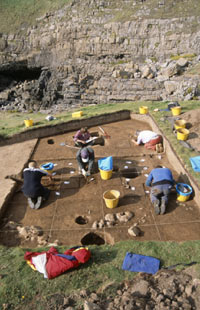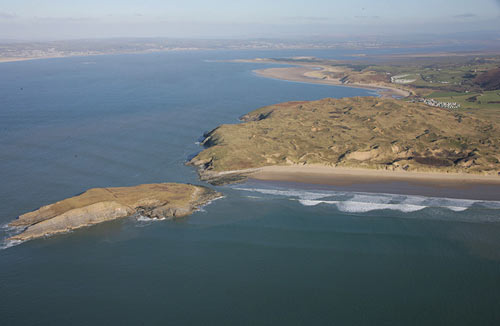
|
 |
A group of early Mesolithic
flint flakes recovered from the excavations at Burry Holms. |
 |
 |
Although there are no known examples in Wales, a small number of Mesolithic houses have
been recorded elsewhere in the British Isles, such as at Howick, Northumberland, where the remains of a Mesolithic
hut were discovered. Radiocarbon dates indicate that the hut was constructed just over 9,700 years ago. Over
18,000 pieces of flint were recovered during the excavations, as well as charred animal bone, charred hazelnut
shells, red ochre and occasional shell fragments. The images shows the excavation of the circular foundations
of the house situated on the cliff edge and a modern reconstruction of how the hut might have looked. |
|
Burry Holms, Gower Today Burry Holms is a tidal island located at the northern end of the Gower peninsula, but during the Mesolithic it would have been an inland hill overlooking the plain of the River Severn. Excavation by the National Museum of Wales in recent years has produced a range of early Mesolithic finds including flint points and tiny saws. Attached to one flint point were traces of birch bark tar, a sticky resin that was once used as glue. This suggests that this glue may have been used to help attach the flint point to a spear or harpoon, evidence of which has been found elsewhere in Europe, but not until now in Wales.
|


